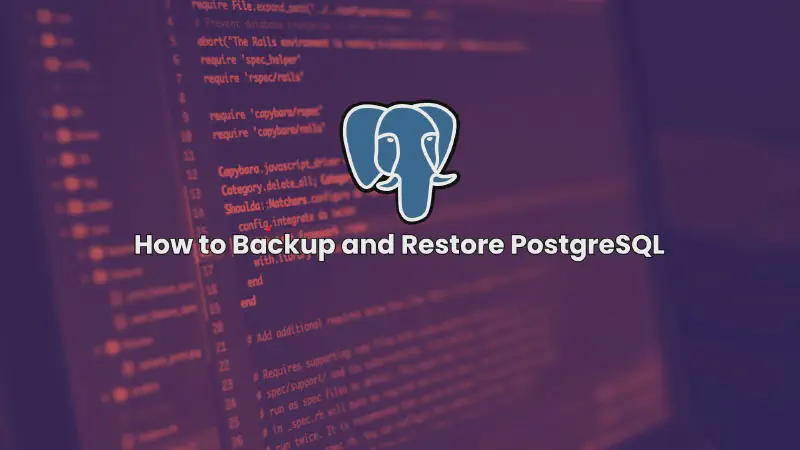In this guide, we’ll walk you through the essential steps to backup and restore PostgreSQL databases. Ensuring your data is safely backed up and can be restored when necessary is a critical aspect of database management. Let’s dive in and explore the methods and best practices for effective PostgreSQL backup and restoration.
Prerequisites
Before starting, ensure you have:
- A machine running PostgreSQL.
- Sudo privileges for necessary commands.
- Basic knowledge of PostgreSQL operations.
- Sufficient disk space for backup files.
Why Backup and Restore are Important
Backing up your PostgreSQL database is crucial to prevent data loss due to unexpected failures, corruption, or accidental deletions. Restoring allows you to recover this data, ensuring business continuity and data integrity.
Types of Backups
Understanding the different types of backups will help you choose the right method for your needs:
- Logical Backups: These backups use SQL commands to recreate the database schema and data. Tools like
pg_dumpandpg_dumpallfall into this category. - Physical Backups: These backups involve copying the actual database files from the filesystem. Tools like
pg_basebackupare used for physical backups.
Backing Up a PostgreSQL Database
Using pg_dump
pg_dump is a utility for performing logical backups. It generates a text file with SQL commands to recreate the database.
To backup a single database:
|
|
To include roles and permissions:
|
|
Using pg_dumpall
pg_dumpall backs up the entire PostgreSQL instance, including all databases, roles, and tablespaces.
|
|
Using pg_basebackup
pg_basebackup is used for physical backups, creating an exact copy of the database cluster.
|
|
Restoring a PostgreSQL Database
Using psql
To restore a database from a pg_dump backup file:
|
|
For restoring an entire PostgreSQL instance:
|
|
Using pg_restore
pg_restore is used for restoring from a custom-format archive created by pg_dump.
|
|
Automating Backups
Automating backups ensures that your data is regularly saved without manual intervention. Use cron jobs to schedule backups.
-
Open the crontab editor:
1crontab -e -
Add a cron job to run
pg_dumpdaily:10 2 * * * pg_dump mydatabase > /path/to/backup/mydatabase_backup_$(date +\%F).sql
Common Backup and Restore Issues
- Insufficient Disk Space: Ensure you have enough space for backup files.
- Permission Issues: Verify that the user running the backup/restore has the necessary permissions.
- Corrupted Backups: Regularly verify backup integrity by performing test restores.
Best Practices for Backup and Restore
- Regular Backups: Schedule frequent backups to minimize data loss.
- Verify Backups: Periodically test restore backups to ensure they are usable.
- Offsite Storage: Store backups in a different physical location or cloud storage for disaster recovery.
- Encryption: Encrypt sensitive data in backups to protect against unauthorized access.
- Documentation: Maintain detailed documentation of your backup and restore procedures.
Conclusion
Backing up and restoring PostgreSQL databases is an essential task for maintaining data integrity and availability. By following the methods and best practices outlined in this guide, you can ensure your data is secure and can be recovered in case of any issues.
FAQs
Q1: How often should I backup my PostgreSQL database?
It’s recommended to backup your PostgreSQL database daily, but the frequency can depend on how often your data changes.
Q2: Can I restore a backup to a different PostgreSQL version?
Restoring a backup to a different PostgreSQL version may work, but it’s best to restore to the same version or use tools to handle version differences.
Q3: What is the difference between pg_dump and pg_basebackup?
pg_dump creates logical backups using SQL commands, while pg_basebackup creates physical copies of the database files.
Q4: How can I compress my PostgreSQL backups?
You can compress backups using tools like gzip:
|
|
Q5: What should I do if my backup restoration fails?
If a backup restoration fails, check the error messages for clues, ensure the backup file is not corrupted, and verify that you have sufficient permissions and disk space.
By following this comprehensive guide, you’ll be well-equipped to manage PostgreSQL backups and restores effectively, ensuring your data is always protected.
